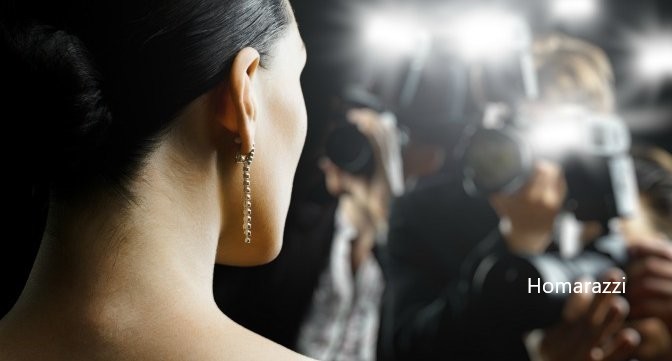Table of Contents
ToggleHomarazzi The Relentless Pursuit of Celebrity Privacy
In the realm of celebrity culture, the intersection of fame and privacy has always been a contentious issue. At the forefront of this conversation is the phenomenon of “homarazzi”—a term that has emerged to describe paparazzi who specifically target celebrities in their private spaces, often capturing invasive photos outside their homes. This relentless pursuit raises significant ethical questions about privacy, the role of media, and the boundaries of celebrity culture.
The Rise of the Homarazzi
The practice of photographing celebrities has evolved dramatically over the years. Once, paparazzi focused mainly on events and public appearances. However, as reality television and social media transformed celebrity culture, there was an increasing demand for more intimate and personal glimpses into the lives of stars. This shift led to the emergence of the homarazzi, a term that highlights the intrusive nature of their work, particularly as they invade private spaces.
The homarazzi have become adept at using technology to track celebrities’ movements. Drones, long lenses, and high-definition cameras allow them to capture candid moments from afar, often blurring the lines between legitimate interest and blatant invasion of privacy. The result is a culture that celebrates access at the cost of individual privacy.
The Ethical Dilemma
The ethical implications of homarazzi photography are profound. On one hand, the public’s fascination with celebrity lives fuels demand for such content. Fans often seek a connection with their idols, wanting to see how they live, what they wear, and how they navigate their daily routines. However, this desire for intimacy often disregards the basic human right to privacy.
Celebrities, despite their fame, are entitled to a degree of personal space. The constant surveillance can lead to significant psychological distress. Stars like Justin Bieber and Kristen Stewart have openly expressed their disdain for invasive paparazzi practices, highlighting how the constant presence of cameras can impact their mental health and sense of safety.
Moreover, the ethical question extends to the media outlets that publish these invasive images. By purchasing and disseminating such content, they perpetuate a cycle of invasion and objectification. The sensationalism surrounding celebrity culture often glosses over the damaging effects of such practices, prioritizing profit over respect for individual dignity.
Legal Boundaries
The legal landscape surrounding paparazzi photography is complex. In many jurisdictions, there are laws intended to protect individuals from harassment and invasion of privacy. For example, California has implemented laws that aim to limit aggressive paparazzi tactics, particularly concerning the use of drones and long lenses near homes. However, enforcement can be challenging, and many paparazzi operate in ways that exploit legal loopholes.
In some high-profile cases, celebrities have successfully sued for invasion of privacy. However, these legal battles can be lengthy and costly, often resulting in little more than a temporary respite from harassment. The ongoing struggle highlights the inadequacy of current laws to protect individuals from relentless scrutiny, particularly for those in the public eye.
The Role of Social Media
Social media has fundamentally altered the dynamics of celebrity culture, providing both a platform for stars to share their lives and a battleground for privacy invasion. Platforms like Instagram and Twitter enable celebrities to curate their narratives, allowing them to share personal moments on their own terms. However, this increased accessibility also invites more scrutiny, as fans and homarazzi alike seek out any opportunity to catch a glimpse behind the curtain.
Interestingly, some celebrities have embraced this duality. Stars like Kylie Jenner and Dwayne “The Rock” Johnson leverage social media to connect with fans while simultaneously navigating the pitfalls of unwanted attention. However, the balance is precarious, as oversharing can lead to an even greater invasion of privacy.
The Impact on Celebrity Culture
The homarazzi phenomenon has broader implications for celebrity culture as a whole. It shapes public perception of fame, often reducing celebrities to mere commodities for consumption. This commodification can dehumanize individuals, stripping away their complexities and reducing them to simplified narratives that serve the interests of entertainment media.
Furthermore, the relentless pursuit of celebrities can foster a toxic environment where their worth is measured by their ability to provide content for public consumption. This environment can push stars to engage in ever-more outrageous behavior, leading to a cycle of scandal and sensationalism that ultimately undermines their well-being.
Conclusion: A Call for Change
As the lines between public and private life continue to blur in the age of social media, the homarazzi phenomenon serves as a critical reminder of the need for boundaries. The conversation surrounding celebrity privacy is not just about the individuals involved; it reflects broader societal values regarding respect, empathy, and the ethical responsibilities of both media and audiences.
As consumers of celebrity culture, it is essential to reflect on our own roles in perpetuating the demands that drive homarazzi practices. Supporting initiatives that promote privacy rights and advocating for responsible media consumption can contribute to a healthier celebrity culture—one that values the humanity of public figures and respects their right to live free from constant surveillance. In doing so, we can begin to create a space where fame does not come at the cost of personal dignity.
